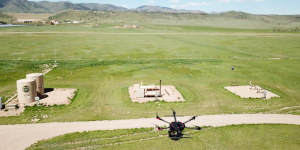Industry momentum builds for nationwide methane regulation
 Oil and gas companies in the United States are the latest to add their voices to the broad set of stakeholders supporting federal regulation of methane emissions from the oil and natural gas sector. These companies have a major responsibility to reduce methane emissions, a key step in the energy transition. This week in Houston, at CERAWeek, Shell, ExxonMobil and BP took important steps to support nationwide direct methane regulation, with Shell urging the Environmental Protection Agency (EPA) to not deregulate methane emissions and to even tighten standards.
Oil and gas companies in the United States are the latest to add their voices to the broad set of stakeholders supporting federal regulation of methane emissions from the oil and natural gas sector. These companies have a major responsibility to reduce methane emissions, a key step in the energy transition. This week in Houston, at CERAWeek, Shell, ExxonMobil and BP took important steps to support nationwide direct methane regulation, with Shell urging the Environmental Protection Agency (EPA) to not deregulate methane emissions and to even tighten standards.
There is more opportunity than ever before to regulate and reduce emissions in ways that work for industry and the environment. As ExxonMobil wrote, federal methane regulation “helps build stakeholder confidence, and provides long-term certainty for industry planning and investment while achieving climate related goals.”
The federal regulation of methane emissions is an essential effort that builds on proven state regulatory models and positive efforts that dozens of companies are already practicing as part of sound business operations.
It’s time for more companies to speak up, because without nationwide methane regulation, industry is only as strong as its weakest link.
Companies moving forward with methane management and technology
A growing group of companies, including many who have not spoken up yet about federal methane regulations, are already taking steps to monitor and reduce emissions both for compliance and as part of good business practice. Continued innovation in methane sensing technology supports the efforts already underway in sites across the country.
For example, infrared cameras that enable visual identification of methane leaks are a relatively recent innovation, providing a steep change in efficiency over some prior techniques. Companies with leak detection and repair programs like Anadarko and ConocoPhillips already utilize infrared cameras as part of surveys of oil and gas facilities. Use of such cameras is a key component of leak detection standards that are already working to deliver emission reductions across multiple jurisdictions. Technological advancements pave the way for standards to realize greater methane reductions at even lower costs.
Industry momentum builds for nationwide methane regulation Share on XMany companies are already experimenting with drones to monitor and enhance operations for a range of safety, environmental and operational reasons. Increasingly, operators also trial drone-based methane inspection, with the potential to reach dispersed assets, manage labor costs and enhance detection speed.
Other approaches for deploying sensors—from aerial, to truck-based, to satellite—round out a diverse mix of emerging strategies that will make it even more cheap and efficient to monitor and reduce emissions. This means that well-crafted regulations—drawing on elements already included in several standards—can harness the sensor revolution within a pragmatic and effective regulatory solution.
Predicting leaks before they start
Digitalization—another key discussion topic at CERAWeek—offers the promise of helping operations become safer, more efficient and cleaner. Executives are investing in digitalization as they prepare their companies to adapt and compete. At EDF, we believe in the power of innovation to empower people to take action. We are collaborating with Accenture Strategy to help industry discover new ways to use digital tools like machine learning to help with predictive maintenance and other techniques that will keep more natural gas in the pipelines.
We hope to hear from companies interested in exploring opportunities in the digital methane space. For starters, we are pleased to work with BP to scope and announce a methane digitalization project in 2019. EDF and BP are committed to making public the progress, outputs and learnings of this work, for the benefit of the broader industry.
The digital methane field is nascent, and there is a lot we look forward to learning together. But what we know now is that digital solutions will make it easier to reduce even more emissions at even less cost. That creates a potential win-win-win for companies, regulators and the environment in the years to come.
Enabling innovation for regulatory compliance
We often hear from companies that regulations should be designed to support innovation. After all, the regulations of tomorrow shouldn’t lock in the technologies and techniques of yesterday. At EDF, we agree. We’ve advocated for state and federal standards to include pathways that recognize and incentivize the development of advanced technologies that can perform even better than what’s available today. And we’re starting the next step—collaborating with BP, Colorado State University and a range of stakeholders—to foster demonstration of the effectiveness of these new technologies and methods.
Rigorous standards that protect climate and public health, combined with transparent pathways for innovation, can deliver environmental results while creating a conducive environment for American ingenuity. From developing analytical models that support demonstrations of environmental effectiveness, to designing field pilots that can show the capabilities of new technologies, it is a busy 2019. We also look forward to engaging with the regulatory community in this process to help foster the flexibility and innovation to deliver workable and effective emission reductions.
The road ahead
At EDF, we are grounded in science and economics. While scientific inquiry alerted us to the methane challenge, the economics of the marketplace’s methane solutions give us confidence not just in the cost effectiveness of today’s solutions, but in the potential for more innovation. We look forward to more companies supporting the EPA methane regulations that offer certainty, address risk and strengthen performance across the entire industry.










